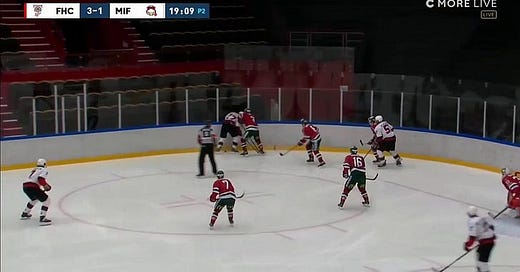Mattias Norlinder: Details Make the Man
The subtleties in the defenseman's game are a sight to behold
“What do I have to do to improve my game?” The young man asked the interviewer.
Truth be told his interview had not been going well at all. While he showed up on time and was smartly dressed (suit, no tie), his overall demeanor was aloof.
A space cadet.
Refusing eye contact, he awkwardly held a Styrofoam coffee cup to his month and spoke through it when e…
Keep reading with a 7-day free trial
Subscribe to Hockey Tactics Newsletter to keep reading this post and get 7 days of free access to the full post archives.



